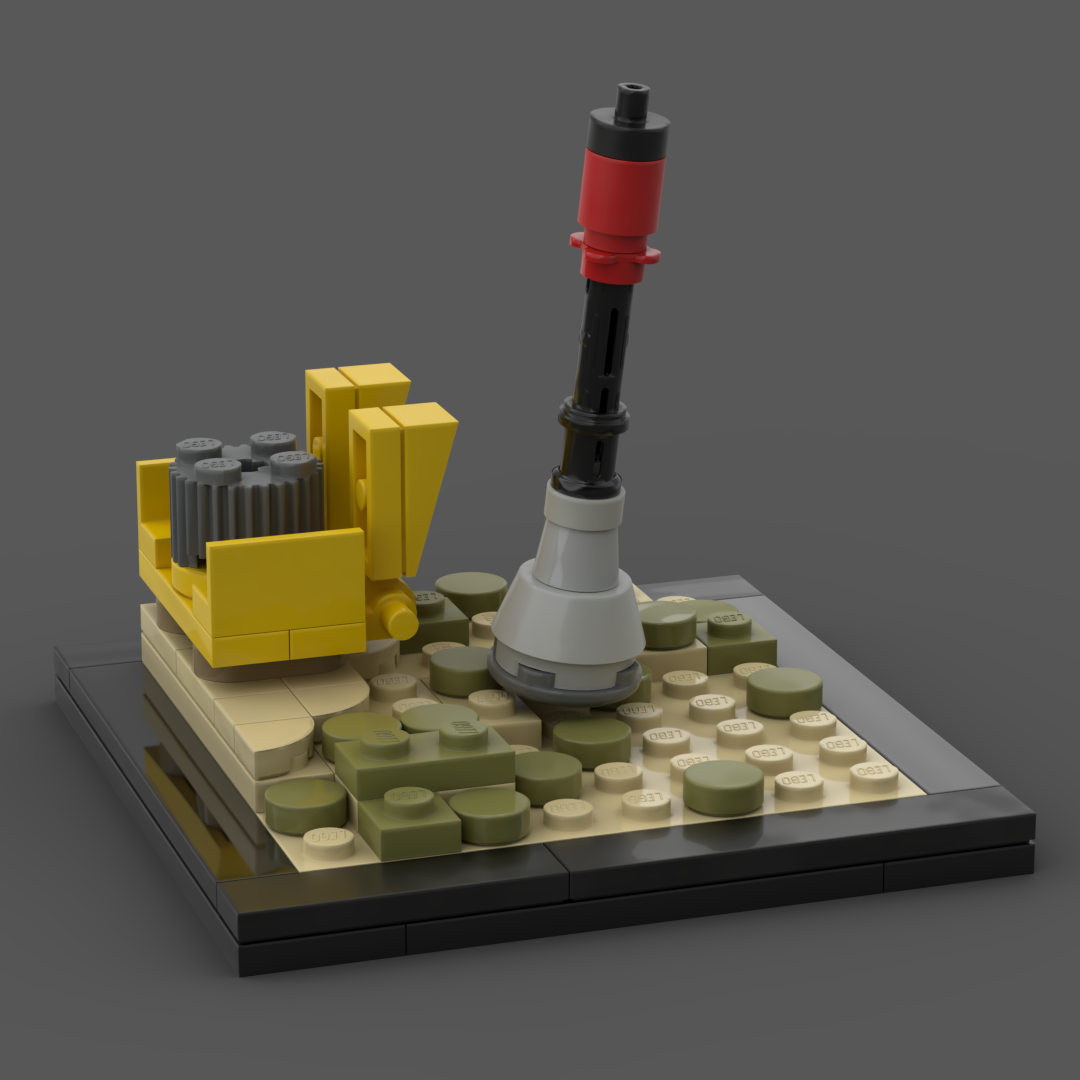
LEGO Designer:
Dan Fallon (phreaddee)
Designed:
October 2020
Categories:
Space Agency - NASA, All, Suborbital and Sounding Rockets
Launch Vehicle Details
Stages:
Length:
Diameter:
Mass at Launch:
Low Earth Orbit Capacity:
Total Thrust:
Apogee:
Class:
The Beach Abort was an unmanned test in NASA’s Project Mercury, of the Mercury spacecraft Launch Escape System. Objectives of the test were a performance evaluation of the escape system, the parachute and landing system, and recovery operations in an off-the-pad abort situation. The test took place at NASA’s Wallops Island, Virginia, test facility on May 9, 1960. In the test, the Mercury spacecraft and its Launch Escape System were fired from ground level. The flight lasted a total of 1 minute, 16 seconds. The spacecraft reached an apogee of 0.751 kilometres (2,465 ft) and splashed down in the ocean with a range of 0.97 kilometres (0.6 mi).Top speed was a velocity of 436 metres per second (976 mph). A Marine Corps helicopter recovered the spacecraft 17 minutes after launch. The test was considered a success, although there was insufficient separation distance when the tower jettisoned. Mercury Spacecraft #1, the first spacecraft off McDonnell’s production line, was used in this test. Total payload weight was 1,154 kilograms (2,544 lb).
Mercury Spacecraft #1 is displayed at the New York Hall of Science, Corona Park, NY. It is displayed indoors, suspended from the ceiling, with an escape tower of unknown provenance attached
Downloads
Pay what you feel
This digital model is provided free of charge. However, if you like it, and you would like to thank the designer for their time, please consider a donation of your choice. 100% of your donation will go directly to the designer.
Donations can be made by following this link:
This model includes just the back end of the trailer the capsule was transported on. You might want to place a little dab of blu-tack underneath the capsule to keep it in place and not keep falling over.
Part count: 64 bricks, 33 lots.
| Unit | width | length | height |
|---|---|---|---|
| Studs | 10.0 | 10.0 | 9.3 |
| Inches | 3.1 | 3.1 | 2.9 |
| Centimetres | 8.0 | 8.0 | 7.4 |
No external URL provided.
Launch History information from space.skyrocket.de
Launch History information from space.skyrocket.de
Related Posts
None found